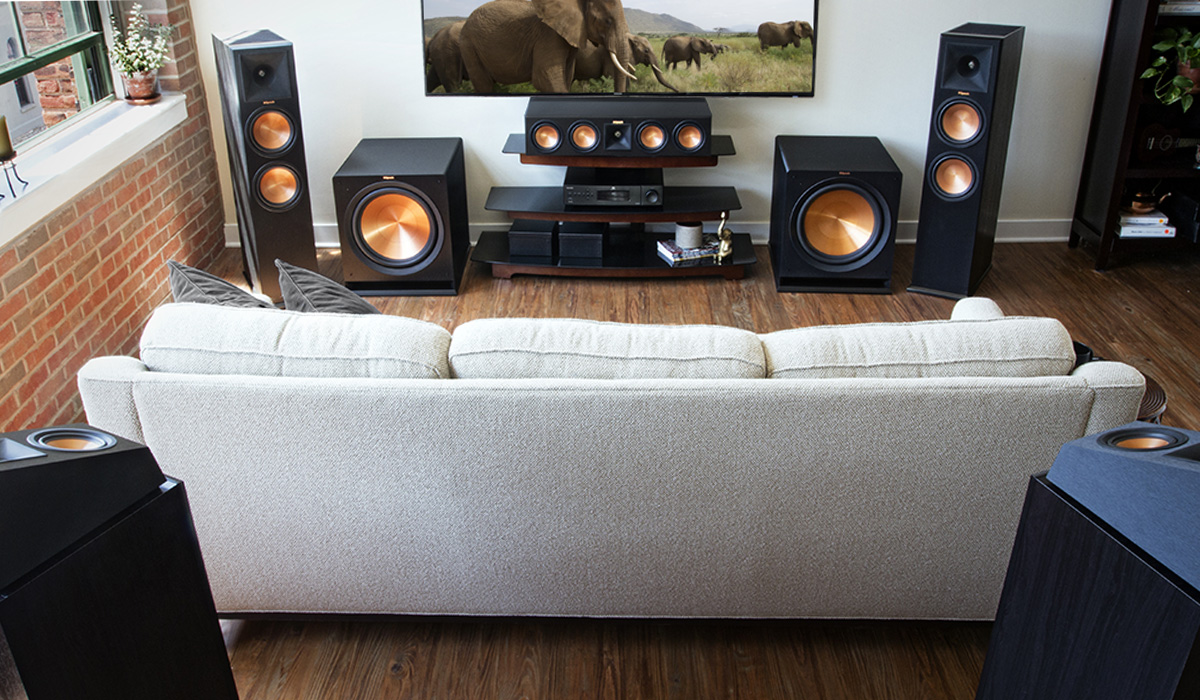Box office ticket sales are sharply declining, and the ability to watch movies in the comfort of your own home all while still being able to get a cinematic experience is one of the major culprits. But can you blame anyone? Who wants to go through all of the rigamarole of going out to the theater, when you can stay in and avoid the lines, the expensive tickets, the overpriced snacks, the sticky floors, and the 9 out of 10 chance that someone in your theater is going to be distracting in some way (whether it’s lighting up the entire row with a bright phone screen, kicking the back of your seat, or talking through the whole movie). While in the past decade or so, theaters have attempted to entice viewers with plush reclining seats, and movie studios have also started to focus on big franchise blockbusters that make fans not want to wait around for these films to hit streaming services, it seems clear that most people are far more loyal to their own couches than they are to their local megaplexes. And it’s no surprise. Large TVs with great picture quality are becoming ever more affordable, and there is a bigger catalog of movies available instantly to the average consumer than ever before. There’s just one problem: the audio.
I’m sure this has happened to you. You’ve been watching a movie, but can’t quite hear what people are saying. So, naturally, you crank the volume up. But then a big car chase happens and suddenly your whole living room is shaking and you’re scrambling to find the remote to turn the volume all the way back down. Then, of course, another dialogue-focused scene comes on that you can’t hear at all. And it’s not just car chases and explosions. Music, sound effects, and more seem to blare through the speakers while quiet scenes and conversations are barely audible. So if you don’t want to wake your family up (or even your neighbor!) you have to basically hold the remote the entire time. So what gives? This didn’t use to happen, did it? Are audio engineers suddenly bad at their jobs now? Do all movies just have terribly mixed audio all of the sudden? Actually, the problem is nearly the opposite.
The reason movies sound so inconsistent on your home TV isn’t because the audio is mixed poorly, but rather because it is mixed too well. Well… sort of. The audio is mastered to work on the large and expensive sound systems at movie theaters which are capable of outputting a high dynamic range of audio in which the quieter moments of a film are still audible and yet the louder sequences are satisfyingly thunderous. But theaters are also designed specifically for this exact sort of scenario. With soundproofing keeping all outside noise out and an array of speakers to make sure even whisper-quiet dialogue reaches you, hearing what characters are saying is easy. In the real world, however, those conditions are a lot more difficult to replicate. Even just the noise of your HVAC can compete with quieter audio, so if you turn your volume up to compensate, that means that by the time a loud moment comes along, it’s probably going to be too loud.
The other aspect is that soundproofing in movie theaters keeps the sound in. Not that you’re worried about your own theater’s volume level anyway. That’s because one of the major reasons people are so unsatisfied with the audio of movies at home isn’t technological, it’s psychological. We’re worried about disturbing other people. While in the theater we don’t have to be anxious about how the volume of what we’re watching is impacting other people, at home, it’s a totally different story. In fact, if you don’t have neighbors nearby, or anyone else within earshot who isn’t actively watching the movie with you, you would probably be a lot less worried about the volume of your streaming content. And while it still wouldn’t sound as well-mastered as the theater, you might have to spend a bit less time fiddling with the volume buttons during your film.
But it’s not exactly a realistic solution to the problem, is it? If you have neighbors, you have neighbors. If your kids go to bed before you throw on a movie, you’re going to be worried about waking them up. One solution is to try to replicate the audio conditions of a theater. You could add soundproofing, a multi-speaker setup, etc. But again, that’s not much of a solution either, because not everyone has the budget (or even the square footage) to make a home theater. In an ideal world, studios would simply release versions of films mixed not for a high dynamic range setup, but instead with low dynamic range audio. Of course, remixing every single film isn’t necessarily a perfect solution either, is it? Well, for us it might be, but expecting production companies to cut into their bottom line by releasing two different mixes of every movie might be setting ourselves up for disappointment. Not to mention the fact that filmmakers want you to experience their cinematic vision as intended. So even when we look at audio devices that include real-time compression or features such as “night mode,” we have to consider that broadly compressing the audio is taking us further away from capturing the cinematic experience at home, not closer to it. For that matter, many people are glad to be getting HDR audio at home and aren’t bothered by the super-loud louds.
So, in the end, it’s always going to be a give and take. Some people might prefer cinema-like audio, while others will seek to invest in a soundbar with onboard compression. Some people might put up sound-dampening curtains in their home theater, while others still have to use their movie-watching spot as a standard living room most of the time. Others still (although I could never) are perfectly happy sitting through an entire movie with headphones on. In my opinion, the best solution would be if studios made a second audio track that mastered the sound for low dynamic range but, instead of using blanket compression, did so with the care and attention of an audio engineer to meaningfully capture the intended cinematic audio experience without muddying all of the sound across the board. But again, I’m not really going to be sitting around waiting for Hollywood to cut into their own margins. Instead of holding my breath, I might have to try out one or two of these other solutions instead.

